Homeschool rooms and at-home learning spaces: best tips and photos from families
Part of what makes the Outschool parent community great is its willingness to to accept different perspectives and approaches to learning.
There are few places where we see this diversity of opinion more clearly than when the discussion turns to homeschool rooms and at-home learning spaces for kids!
With more and more families making plans that may include at-home learning, many parents are wondering how they can best create a space for their children to take class or engage in other learning activities in the home. This can be especially challenging when space is limited and all rooms already have a clearly defined purpose.
Fortunately, the Outschool parent community has come through with boundless creativity and generosity when we asked them to share their tips and photos for creating a a homeschool room or at-home learning setup that works for their learners.
We’ll share a few themes that emerged in terms of parents’ philosophies around homeschool rooms and at-home learning spaces, as well as lots of fun pictures about where Outschool learners take their classes at home.
Note: A few common challenges that we are aware of and empathize with include: limited budgets, limited spaces, supporting multiple learners, supporting learners with diverse needs, and others. We've tried to include suggestions and examples in this article that suit a variety of situations and needs.
Some families creatively convert or repurpose spaces in their home into dedicated learning areas
A garage storage space becomes a dedicated area for Outschool classes.
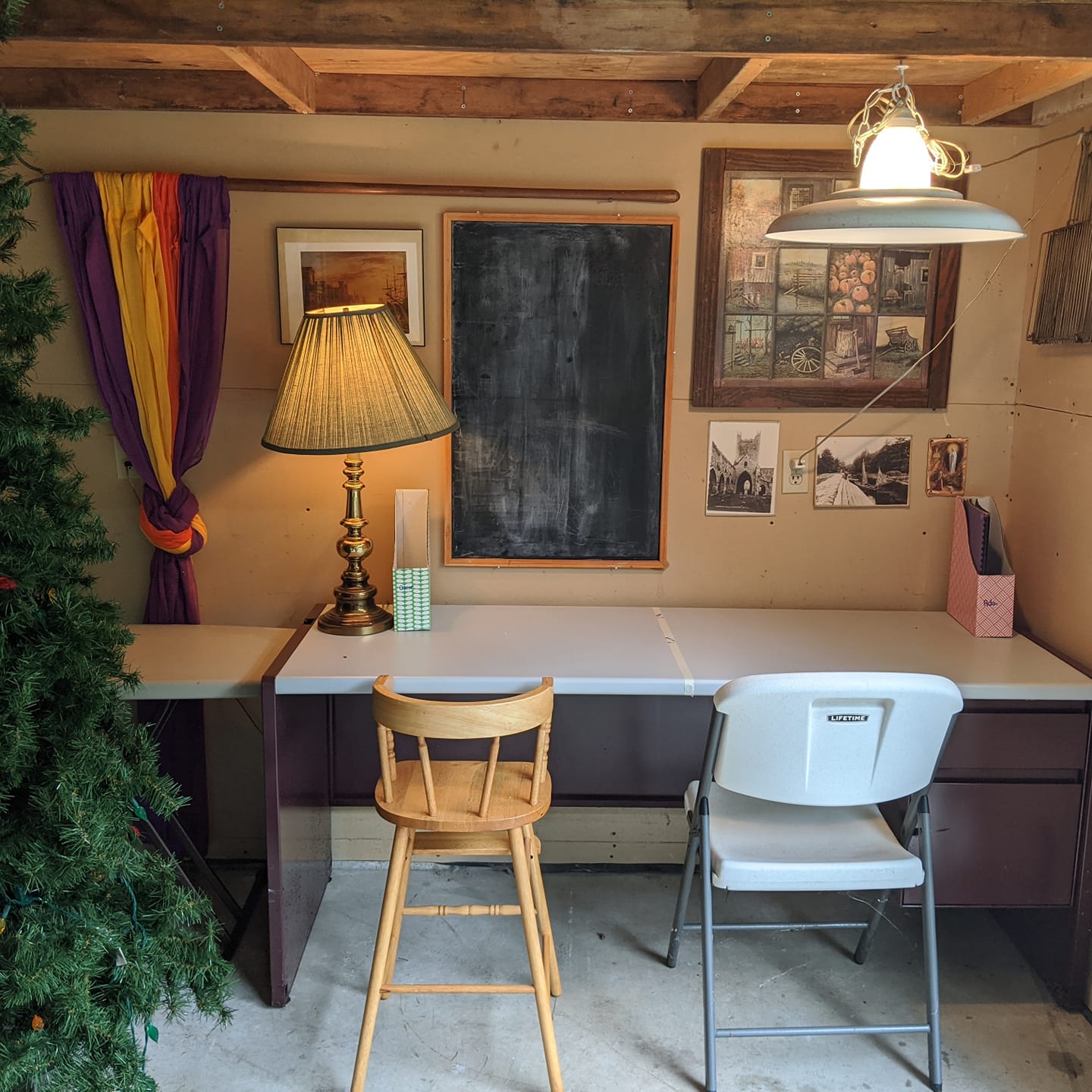
This closet has been repurposed into a convenient at-home learning area.
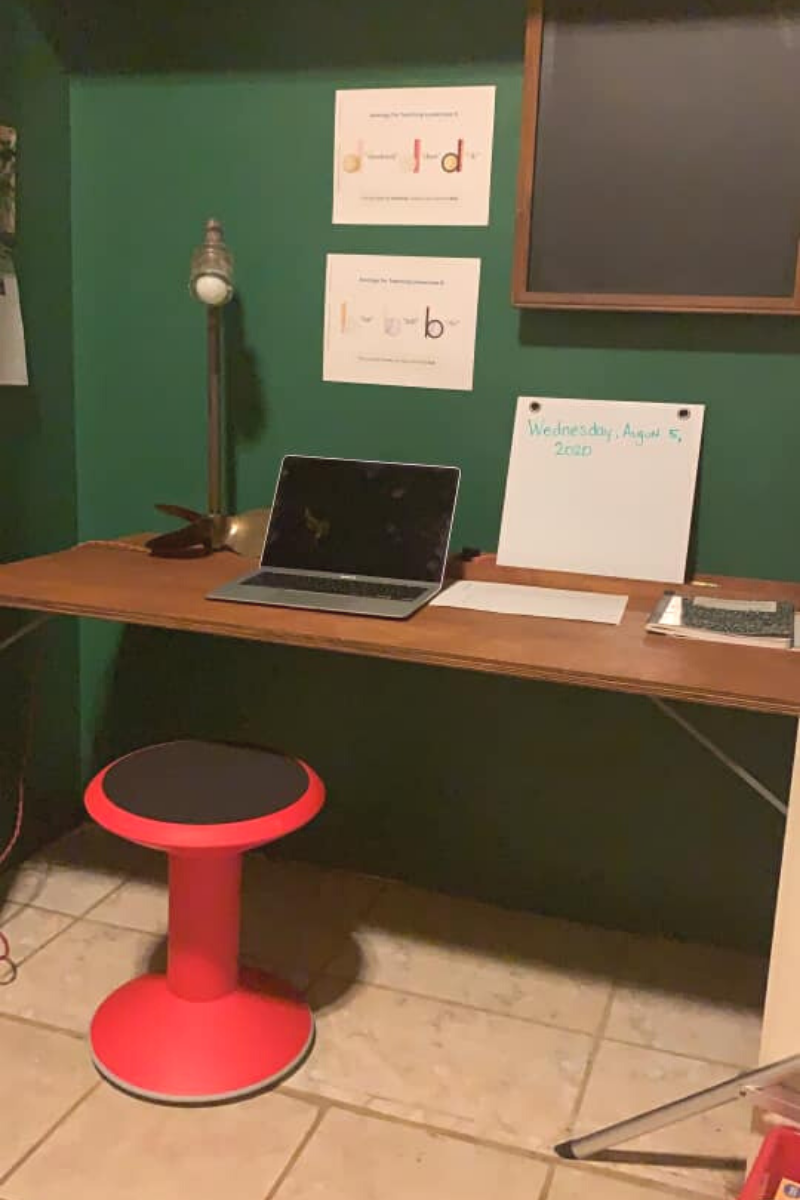
This dining room table fits four learners (and one parent for support) during at-home learning.
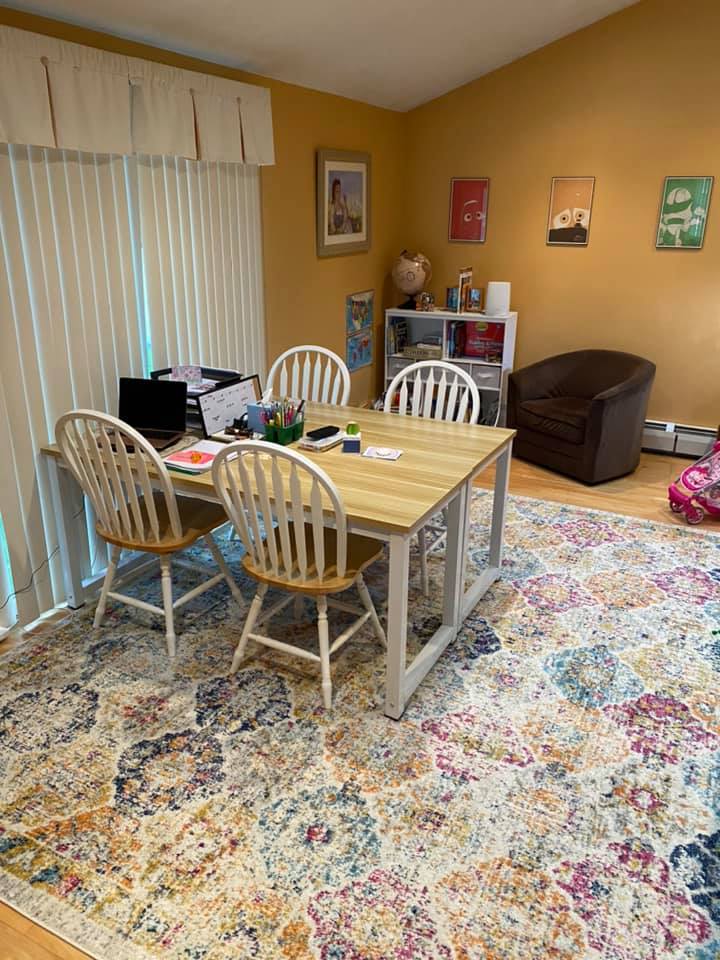
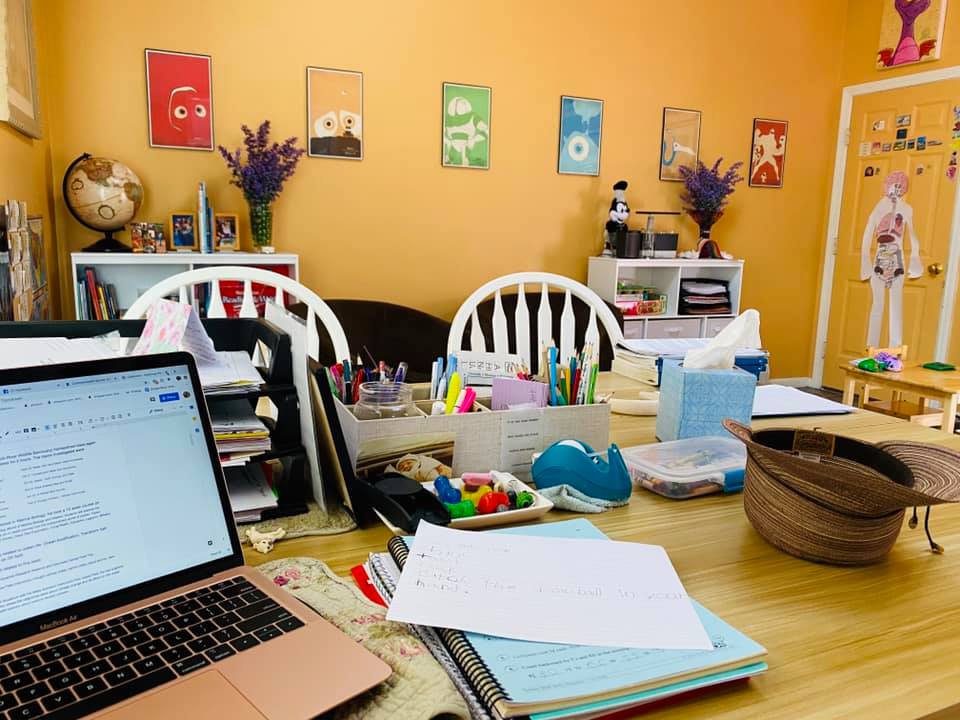
Outschool classes to help your learner design their learning space, stay organized and focus!
Support your learner in doing their best this year by suggesting one of these organization, interior design or study skills classes:
- Clean your room and get organized
- Become an interior designer
- High school interior design and home design
- Interior design: Learn the basics
- Interior design: Weekly challenges
- Effective study skills
- Study skills: Note taking
Many parents note that kids seek out learning spaces that fit their changing needs
What better place for an Outschool class than next to your cat? 😻

For this family, learning happens in several places around the house, too.
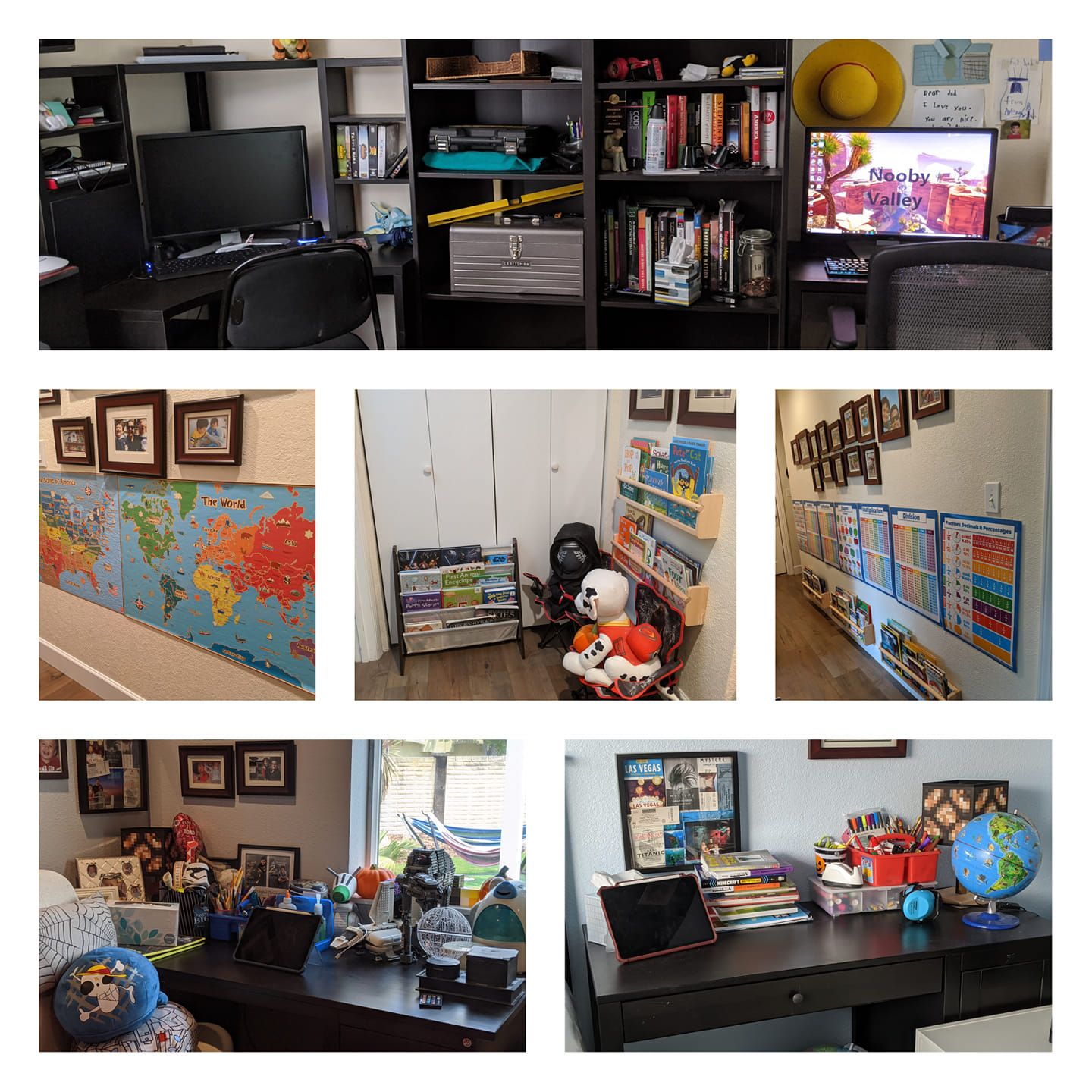
Making a space near an open window or sunlight can help learners stay energized and focused.

Others, when possible, prioritize clutter- and distraction-free spaces
Keeping an area of the home as clean and quiet as possible helps this family to focus.

Some families make the switch from learning anywhere around the house to designating a single, quiet space.

7 Tips for Homeschool Rooms and At-Home Learning Spaces
When surveying the parent community about their best tips for homeschool rooms and at-home learning spaces, we were overwhelmed with great responses. Here are a few ideas that we saw come up several times or that addressed specific challenges:
- For quickly converting a learning space to a living space, Sarah says, “One of the best things we have done is put a rolling art cart next to our kitchen table. The kids create all day and we can roll it into the closet when we have guests over.”
- Amber has a hack for helping her learner follow class more easily: “Best thing we’ve done is attach the laptop to the TV, so they can see the teacher and information being presented better.”
- According to Janni, you can create quick and inexpensive room dividers using a common household item: “Our best tip is the cheap shower curtain we found. It was the perfect Outschool-backdrop.”
- Self-directed learning can carry over to learning space design, says Tina: “If possible have the children help set up 'their' space. It really helps them with taking pride and ownership in it.”
- For parents of multiple learners, Rosie gives a tip for making it work: “Stay near enough to help your class attendee with Zoom, but offer something quality to your other children like those Target $3 craft kits or a favorite TV show or snack.”
- Johanna shared a two-for-one tip on at-home learning with twins: “Don't spend a lot of money on a dedicated space since there is a great chance it won't see much use. Also, split up your twins into different rooms when they work, if possible.”
- Marsha shared an idea that was echoed by many other experienced homeschoolers: “Let them do it wherever they want within reason: a formal desk, out on the deck, on the patio or at the kitchen table. You want them to be able to learn everywhere.”
When it comes to examples of what homeschool rooms and at-home learning spaces look like, the situations vary as greatly as the learners' interests! We divided examples up into a few major themes:
- Resourceful converted or multi-purpose spaces
- Families who typically learn in a variety of locations
- An emphasis on organization and/or minimizing distractions
As with learning itself, it's the learner that matters most
If there's one theme that sticks out from hearing what many Outschool parents have to say about creating homeschool rooms or at-home learning spaces for their kids, it's that there is no cookie-cutter answer.
Just as when you plan your child's at-home learning, planning the at-home learning space means taking into account your budget, your learner's preferences, your own responsibilities, your goals and more.
Hopefully these tips and photos provide you with some inspiration and direction as we head into a new school year where at-home learning is more common than ever.
More resources one homeschool rooms and at-home learning space
Want more? Explore these other inspiring resources to help perfect your learning space, not matter the room size or budget you have to work with.

